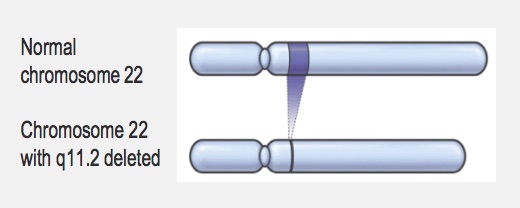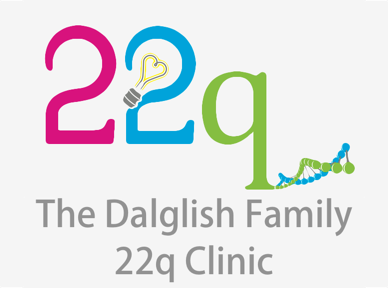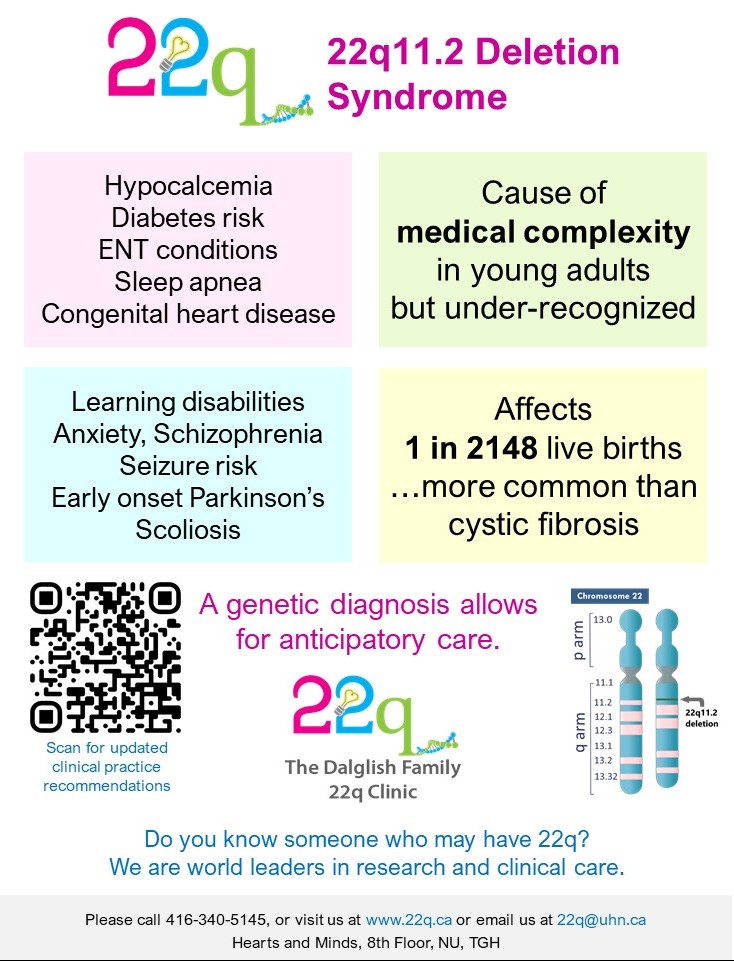22q11.2DS ("22q") Quick Facts
What is 22q11.2 Deletion Syndrome (22q11.2DS)?
22q11.2DS or 22q stands for 22q11.2 deletion syndrome.
| 22 | Chromosome 22 (the smallest of the human chromosomes, in every cell of the body) |
| q | The long arm of the chromosome |
| 11.2 | The position on the chromosome - like the GPS coordinates |
| Deletion | A piece missing from one of the pair of chromosome 22 |
| Syndrome | A collection of features |
22q11.2DS used to be called many names, including velo-cardio-facial syndrome and DiGeorge syndrome [See Same Name Campaign.
An individual with 22q11.2 Deletion Syndrome (22q11.2DS) is missing a piece of chromosome 22.

22q11.2 deletions…
- Are found in about 1 in every 2148 newborns
- Are often under-recognized and not tested for
- Are usually new (instead of inherited) genetic changes, not found in either parent
- Are found in a parent about 1 in every 10 people
- Are not caused by anything the parents did or did not do before or during the pregnancy
22q11.2DS is a genetic condition that has many possible health issues. These can include:
- Intellectual and developmental disabilities (ranging from very mild to severe)
- Developmental delay
- Learning difficulties
- Problems with how the palate works, that can cause nasal sounding speech
- Congenital heart defects (birth defects of the heart)
- Multiple infections as a child
- Treatable psychiatric illnesses (especially anxiety and schizophrenia)
- Neurological conditions (epilepsy and early onset Parkinson disease)
- Endocrinological conditions (hypothyroidism, hypocalcemia, type 2 diabetes)
- Kidney disease
- Thrombocytopenia (Low blood platelet count)
- Curvature of the spine
…plus many others
No one person has all the possible features. Everyone with 22q11.2DS is different, even within a family.
There are treatments available for nearly all of the features.
For more information, please see:

